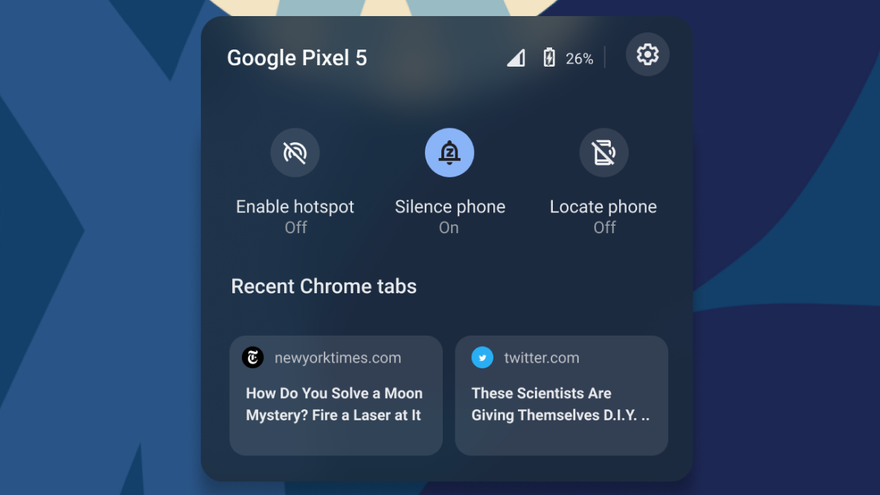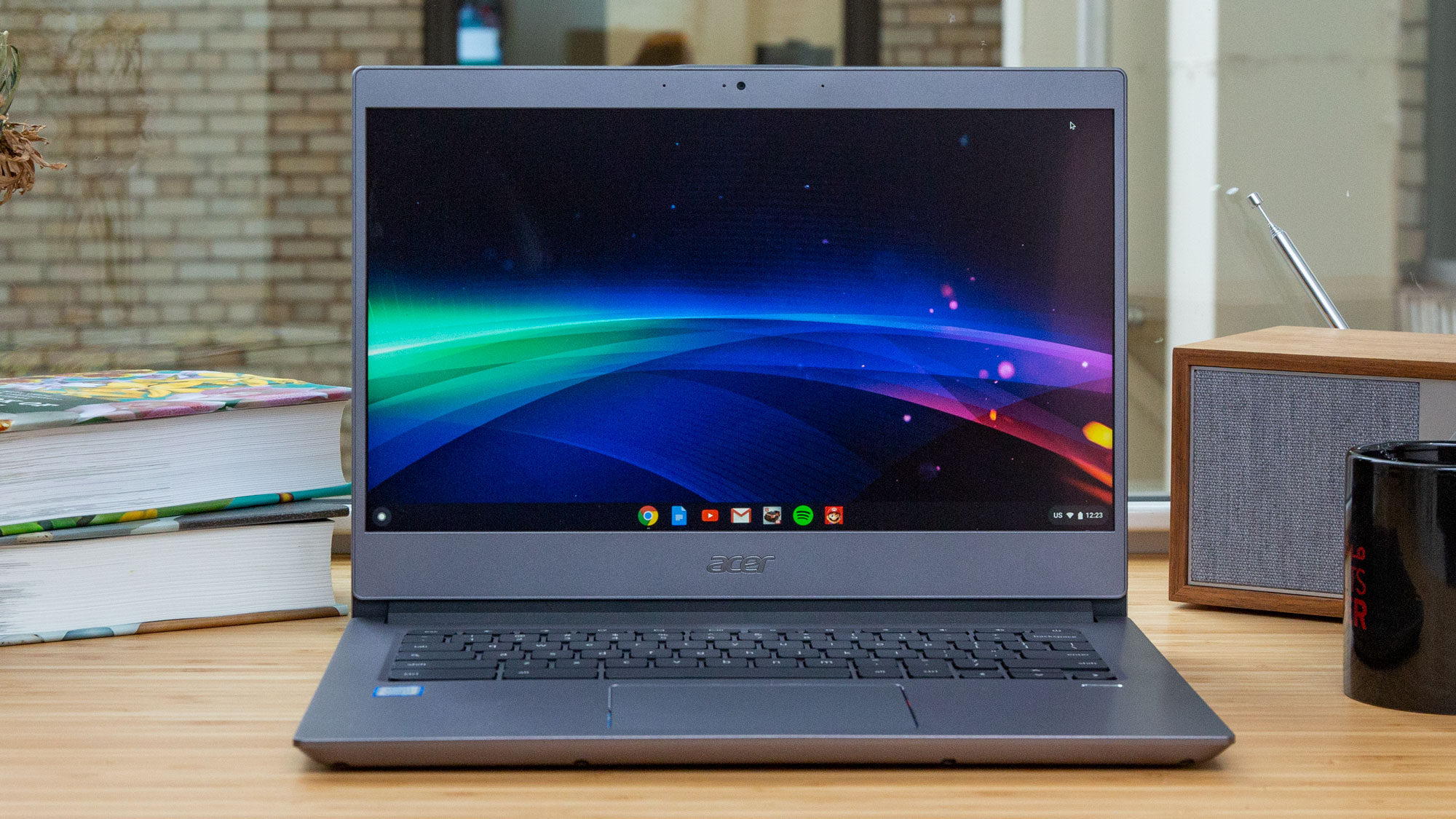Chrome OS 89 groundbreaking update gets Chromebooks ready to take on Windows and Mac
Ten years later, Google's Chrome OS finally feels ready to take on the giants

A browser in a box. That’s all Chrome OS was when it debuted a decade ago. There was no taskbar, no window multitasking, no file manager, or any other element you’d find on a traditional desktop operating system. On the first Chromebooks, the Chrome browser was your only window to the outside world and you couldn’t even close it since there was simply nothing else on the OS.
Cut to 10 years later and now the number of internet users has more than doubled and Chrome’s base has skyrocketed from 30 million to over 2.5 billion. Google’s radical, ambitious bet on the future of cloud computing — which many believed wouldn’t stand the test of the time and would end up in the infamous Google graveyard — has seemingly paid off.
Chrome OS 89: the journey so far
Last year, Chrome OS surpassed Apple’s macOS to become the second-most popular desktop operating system. In the United States, Chrome OS accounted for a staggering 27% of all computer sales in 2020.
Chrome OS’s 10-year journey has been an adventurous one. After dozens of updates and overhauls, it’s a far cry from the barebones platform Google originally offered. Chromebooks are now equipped with just about every feature you’d need on your PC, including multiple workspaces, multitasking gestures, a tablet mode, and more.
Most importantly, Chrome OS, over the years, has gained support for an assortment of app types. In addition to Chrome extensions, Chromebook owners have the ability to install Android apps, Linux software, and even full-fledged Windows programs and virtual machines.
Yet somehow, Google has managed to stick to its three foundational principles for Chrome OS: Speed, simplicity, and security. Despite the raft of changes, you’re still greeted with only a familiar Chrome logo on the bottom when you boot any new Chromebook -- the rest is all optional and “stays out of the way” as the company promised in its 2009 blog post.
Plus, Google’s longstanding commitment to frequent updates (post-2020 Chromebooks are promised with eight years of software support) has kept security breaches and vulnerabilities at bay. Heck, my Asus Flip from six years ago continues to receive security patches and offers the same experience as my HP Chromebook x360.
Sign up to receive The Snapshot, a free special dispatch from Laptop Mag, in your inbox.
However, most of Chrome OS’s base is composed of students, teachers, and enterprises. To mark its 10th anniversary, Google is taking a giant leap into a territory where Chrome OS hasn’t challenged others: general consumers. For many consumers, a Chromebook remains a backup or an affordable option for kids rather than their primary personal computer. Google is looking to change that with Chrome OS’s 89th update.
Chrome OS 89: What’s new?
With the Chrome OS 89 release, Google is building upon its plan to develop an ecosystem of devices, similar to Apple. The centerpiece of this update is the Phone Hub, a dashboard-like tool that will allow you to control your Android phone from your Chromebook.
Neatly tucked away in the corner of the screen, the Phone Hub lets you tweak phone settings, such as toggling the Do Not Disturb option and the Wi-Fi hotspot; view and respond to messages, sync Chrome tabs and network passwords, and more -- right from your Chromebook.
Google is also expanding its AirDrop-esque functionality, Nearby Share, to work across Android and Chrome OS. This means you can wirelessly share files between your Android phone and Chromebooks without any extra software.
While I found the notification mirroring feature unreliable during my testing, the rest of the new continuity features are well executed. Google also appears to have improved existing Android linking tools like Smart Lock, which have always been fairly inconsistent for me.
There’s more to come on this front. As per reports, users might soon be able to cast their Android phone’s entire screen to their Chromebook.
The Chrome OS 89 update brings a handful of other common desktop features that had been long overdue. A new clipboard manager enables you to access the last five items you’ve copied. “Quick Answers” pulls up relevant information such as a definition, translation, and a unit conversion when you select a word. “Tote” is a dedicated space at the bottom where people can pin files and folders for quicker access. Chrome OS even has a built-in recorder so you no longer have to rely on suspicious third-party extensions for documenting your screen.
Chrome OS 89 adds deeper integration for Android apps, too. Now, when you share a file on your Chromebook, you’ll get options for both web and Android apps.
The latest features feel like a natural extension for Chrome OS, which has been consistently picking up updates for essential desktop utilities. Many of these latest additions seem to share a pattern: their third-party counterparts are bestsellers on the Chrome Web Store.
Chrome OS 89: Say goodbye to the web store
Due to Chrome OS’s minimalist approach, Chromebook owners often have to turn to Chrome add-ons for basic tools like photo editors and screen recorders. It’s increasingly evident in recent updates that Google wants people to depend on the Chrome Web Store as little as possible -- likely because of the store’s reputation for hosting malicious and rogue apps.
These updates are a godsend, especially for long-time users like myself who primarily employ a Chromebook. Chrome OS is beginning to develop into a more accommodating desktop OS that doesn’t force you to seek third-party solutions for the most rudimentary computer tasks.
Chrome OS 89: the cost of progress
One of the factors behind Chrome OS’s rapid evolution has been its much shorter update cycle. Traditional operating systems like Windows 10 and macOS are updated every few months, while Chromebooks get new releases every 4 to 6 weeks.
However, this rapid expansion has come at a cost. The availability of so many different app ecosystems has spawned a conundrum of sorts for users. If they want to install an app, which version of it should they download between the web, Android, and Linux?
Each variation has its own sets of pros and cons that are usually aren’t immediately apparent unless you poke around for a bit. Google hopes to simplify the process by making that decision for the user. In the Play Store, the company is replacing some Android listings including Twitter and Google News, with its web apps. It’s a clever workaround, although a centralized app store with Android, web, and Linux services will probably patch this dilemma in the longer run.
Chrome OS 89: solving “What if?”
Chrome is growing a lot but where does it all fit in Google’s bigger picture?
Google wants Chromebooks to go head-to-head with Macs and Windows PCs and the company has spent much of the last half a decade filling the gaps.
For years, a simple “What if?” has deterred most potential buyers away from Chromebooks. What if later down the road, they need a desktop video editor? What if they want to try a non-Chrome browser?
By adding native desktop utilities and support for the various apps like Windows and Linux, Google has put the majority of such concerns to rest. And as we mentioned in our review for the Windows experience on Chrome OS, these extra features are available when you need them, else they don’t get in your way if you just want to instantly get on the internet.
For the next set of releases, Google says it plans to integrate “sensor technologies for more personalized experiences,” and utilize AI tech “to help people proactively.” It’s also said to be experimenting with splitting the Chrome browser from Chrome OS. This is likely a way to better manage the latter’s evolution into a more full-fledged desktop operating system.
Bottom line
The web has, at long last, caught up to Chrome OS’s vision for the future of computing, and Google’s now actively making sure Chromebooks can keep up the pace to capture the consumer and enterprise markets.
The Chrome OS M89 update will roll out globally to all compatible Chromebooks over the next few weeks. You can manually check for it by heading into Settings > About Chrome OS.
Shubham Agarwal is a freelance technology journalist from Ahmedabad, India. His work has previously appeared in Business Insider, Fast Company, HuffPost, and more. You can reach out to him on Twitter.







